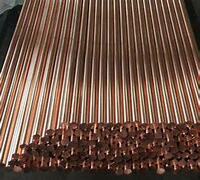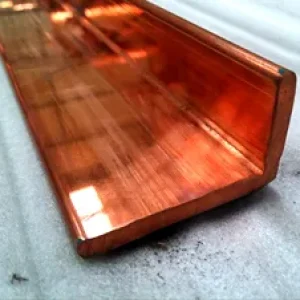Overview of Copper Materials/Products
Copper materials and products come in various forms, each designed to cater to specific industrial and commercial applications.

Copper Products
Features of Copper Materials/Products
Chemical Composition: The primary parameter defining copper alloys is their chemical composition, which determines properties like conductivity, strength, and corrosion resistance. Common alloys include brass (copper-zinc), bronze (copper-tin or copper-aluminum), and nickel silver (copper-nickel-zinc).
Conductivity: Measured in percent IACS (International Annealed Copper Standard), conductivity is crucial for electrical applications. Pure copper has a conductivity of nearly 100% IACS, while alloys have lower values depending on their composition.
Tensile Strength: Expressed in MPa (megapascals), tensile strength indicates the maximum stress a material can withstand before fracturing. Ranges widely from around 200 MPa for soft copper to over 1000 MPa for some high-strength bronzes.
Elongation: Represents the material’s ductility and ability to deform before breaking, given as a percentage. Higher elongation values indicate greater formability.
Hardness: Measured using scales like Brinell, Rockwell, or Vickers, hardness influences machinability and wear resistance. Soft coppers have low hardness, whereas hardened alloys can be much harder.
Corrosion Resistance: Copper and its alloys generally offer good to excellent corrosion resistance, but specific environments (e.g., marine, acidic, alkaline) require consideration of the alloy’s specific resistance properties.
Thermal Conductivity: Important for heat exchange applications, copper has high thermal conductivity, typically ranging from 380 to 400 W/mK for pure copper.
Form and Shape: Copper products come in various forms such as wire, rod, tube, sheet, plate, foil, strip, and extrusions, each with specific dimensional parameters like diameter, thickness, width, and length.
Finish: Surface finish can be bright, polished, matte, or coated (e.g., tin-plated for solderability). Finishes affect appearance, corrosion resistance, and bonding properties.
Fabrication Characteristics: Machinability, weldability, and formability are important for manufacturing processes. Some alloys are easier to machine or form than others.
ASTM/ISO Standards: Copper materials often adhere to standards set by organizations like ASTM (American Society for Testing and Materials) or ISO (International Organization for Standardization), ensuring consistency and quality. Examples include ASTM B152 for copper sheet and plate, and ISO 15608 for welding.
Environmental Considerations: For certain applications, materials must meet specific environmental regulations, such as RoHS (Restriction of Hazardous Substances) compliance for electronics.
Application of copper materials and products
Power electronics: wires and cables, transformers, PCB circuit boards, connectors.
Construction industry: water pipes, roofs, decorative components, hardware accessories.
Industrial manufacturing: heat exchangers, bearings, valves, mechanical parts.
Transportation: car radiators, ship condensers, high-speed rail conductive parts.
Medical & Food: medical equipment, food processing pipelines, brewing equipment.
New energy: solar collectors, wind turbine conductive parts.
Company Profile
Copper-group is a trusted global chemical material supplier & manufacturer with over 12-year-experience in providing super high-quality copper and relatives products.
The company has a professional technical department and Quality Supervision Department, a well-equipped laboratory, and equipped with advanced testing equipment and after-sales customer service center.
If you are looking for high-quality copper products, please feel free to contact us or click on the needed products to send an inquiry.
Payment Methods
L/C, T/T, Western Union, Paypal, Credit Card etc.
Shipment
It could be shipped by sea, by air, or by reveal ASAP as soon as repayment receipt.
Five FAQs for copper materials and products
What is the difference between pure copper and copper alloys?
Pure copper (such as T2) has better electrical and thermal conductivity, while copper alloys (such as brass and bronze) enhance hardness, wear resistance or corrosion resistance.
Will copper products rust?
Copper will oxidize to form verdigris (basic copper carbonate) in a humid environment, but it will not corrode the metal body like rust.
Why is copper often used in drinking water pipes?
Because of its antibacterial and corrosion resistance, and does not release harmful substances, it meets hygiene standards (such as ASTM B88).
How to identify genuine and fake copper products?
Real copper has a deep sound when knocked, is reddish in color, and has a high density (8.96 g/cm³); fake copper (such as copper plating) may be light and easy to fade.
What is the recycling value of copper?
The copper recycling rate is as high as over 90%, and the price of scrap copper is about 80%~95% of new copper, which is economical and environmentally friendly.

